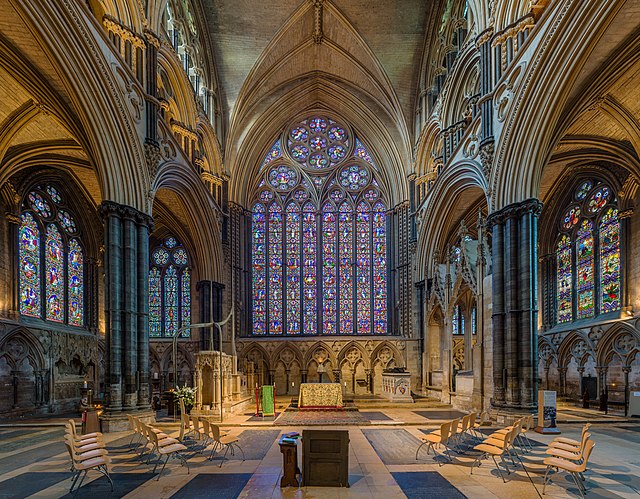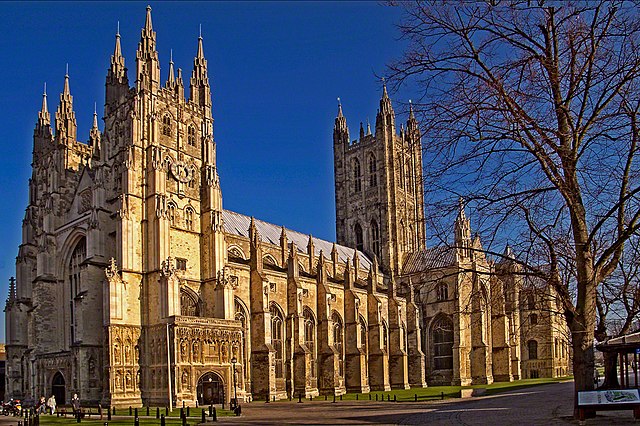Perpendicular Gothic architecture was the third and final style of English Gothic architecture developed in the Kingdom of England during the Late Middle Ages, typified by large windows, four-centred arches, straight vertical and horizontal lines in the tracery, and regular arch-topped rectangular panelling. Perpendicular was the prevailing style of Late Gothic architecture in England from the 14th century to the 17th century. Perpendicular was unique to the country: no equivalent arose in Continental Europe or elsewhere in the British Isles. Of all the Gothic architectural styles, Perpendicular was the first to experience a second wave of popularity from the 18th century on in Gothic Revival architecture.
King's College Chapel, Cambridge, Great East Window (four-centred arch, straight mullions and transoms)
The chancel of Gloucester Cathedral (c. 1337–1357)
Chapter house by William de Ramsey (c. 1332) at Old St Paul's Cathedral (by Wenceslaus Hollar)
Four-centred arch west window of St George's Chapel, Windsor Castle
English Gothic architecture
English Gothic is an architectural style that flourished from the late 12th until the mid-17th century. The style was most prominently used in the construction of cathedrals and churches. Gothic architecture's defining features are pointed arches, rib vaults, buttresses, and extensive use of stained glass. Combined, these features allowed the creation of buildings of unprecedented height and grandeur, filled with light from large stained glass windows. Important examples include Westminster Abbey, Canterbury Cathedral and Salisbury Cathedral. The Gothic style endured in England much longer than in Continental Europe.
Image: Lincoln Cathedral Presbytery, Lincolnshire, UK Diliff
Image: Canterbury cathedral wyrdlight
Image: Cambridge King's College Chapel Vault
Salisbury Cathedral (1220–1258) (tower and spire later)








